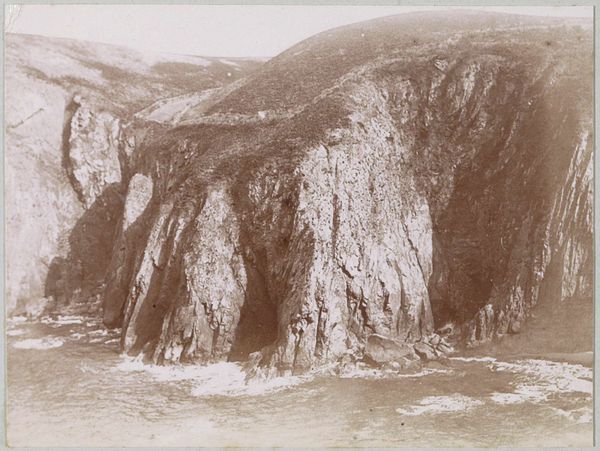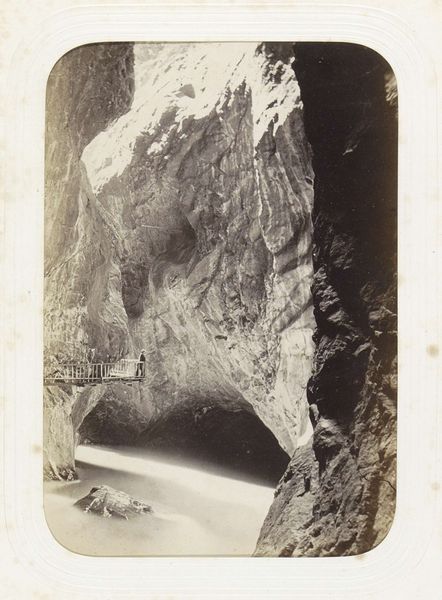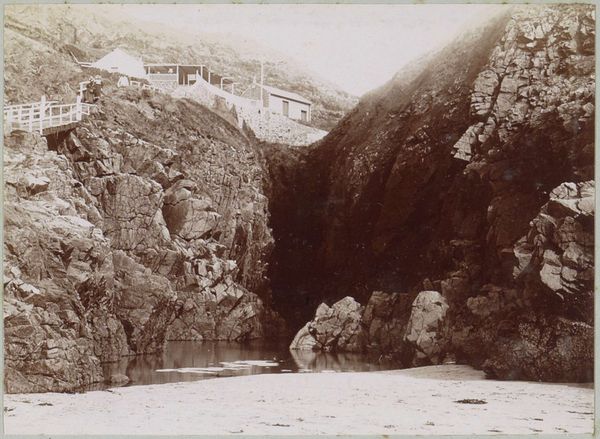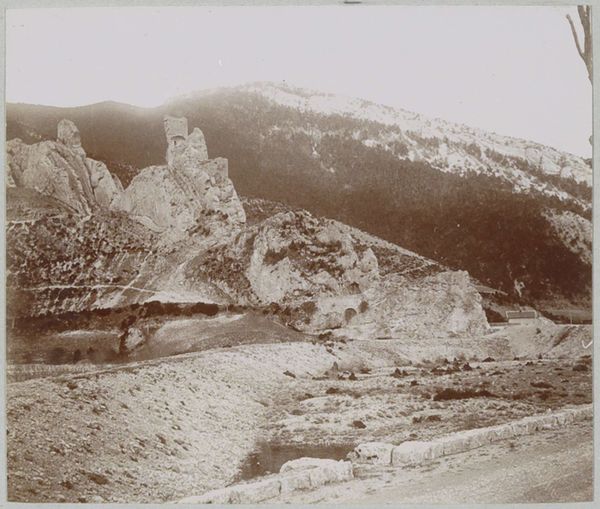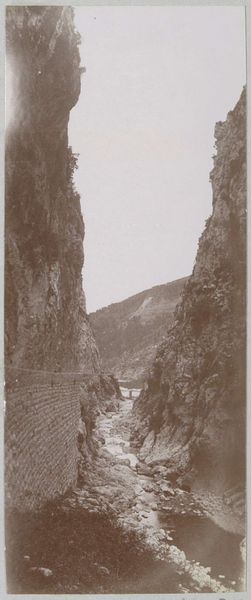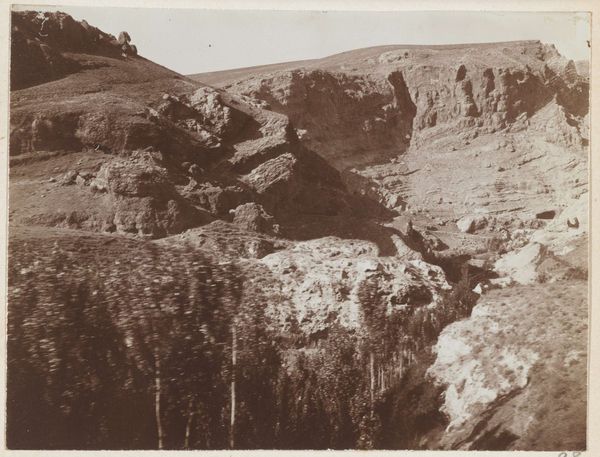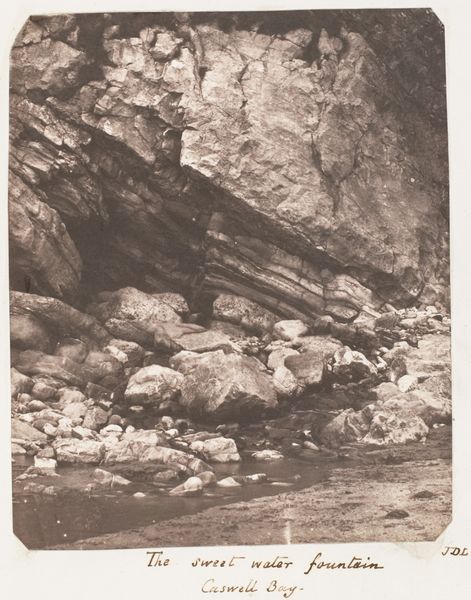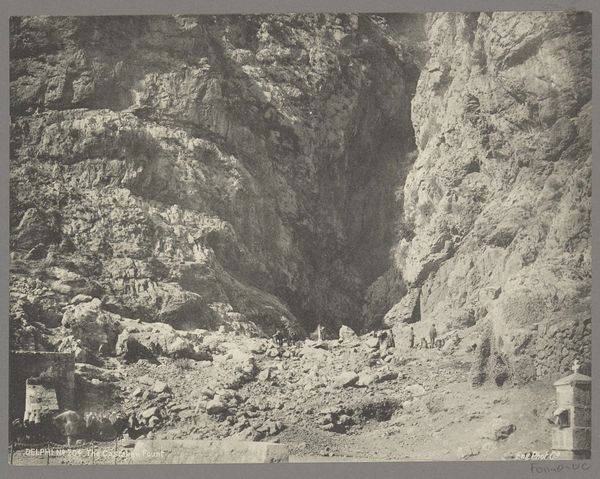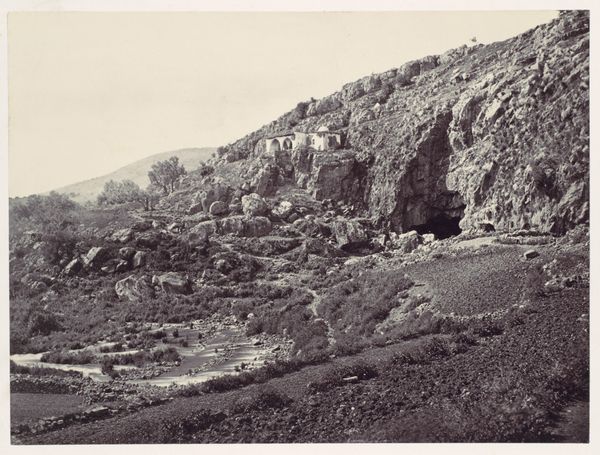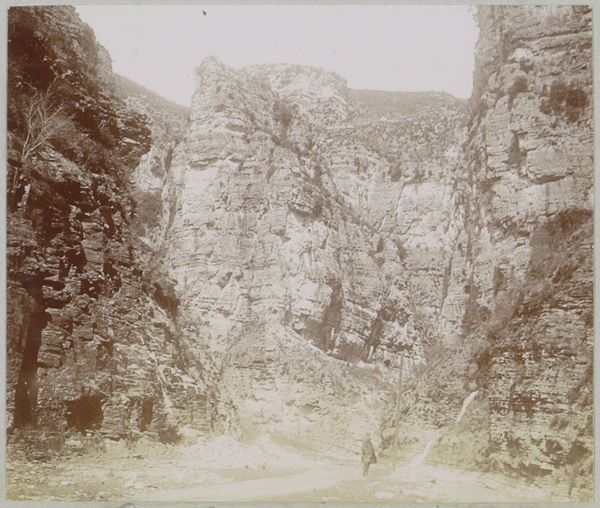
photography
#
pictorialism
#
landscape
#
photography
#
realism
Dimensions: height 80 mm, width 110 mm
Copyright: Rijks Museum: Open Domain
Editor: Here we have "View of the cave of Plemont on Jersey," a photograph taken in 1896, currently housed at the Rijksmuseum. The sepia tones create such a textured landscape. I’m drawn to the stark contrast between the light hitting the beach and the darkness within the cave itself. What do you see in this piece? Curator: It is interesting that you noticed that. Structurally, the photograph employs a dramatic chiaroscuro effect, pushing the cave mouth into deep shadow, which creates an almost abstract void. This void is then juxtaposed with the highly detailed and illuminated rock formations. Note the careful arrangement of masses—how the photographer uses the negative space to guide the eye toward the central form. Do you perceive any semiotic intention within that compositional strategy? Editor: It seems to me that the contrast makes the photograph appear so raw and truthful. It is an interesting choice considering photography back then was advancing so much and yet the photographer took the high road for detail and texture. But what about the people in the upper right, are they important? Curator: The inclusion of figures adds a crucial element of scale and temporality. Consider how the linear perspective of the walkway and the relative size of the figures emphasizes the monumental quality of the natural landscape. Furthermore, their presence injects a narrative possibility; viewers become aware of being both separate and intimately involved. Does that not alter the dialogue? Editor: Definitely. Now it does seem like it enhances not only the scale of the place, but even a relation of man and nature. Now it’s no longer just a pretty shot. I'll consider how I talk about pictorial elements next time!
Comments
No comments
Be the first to comment and join the conversation on the ultimate creative platform.
